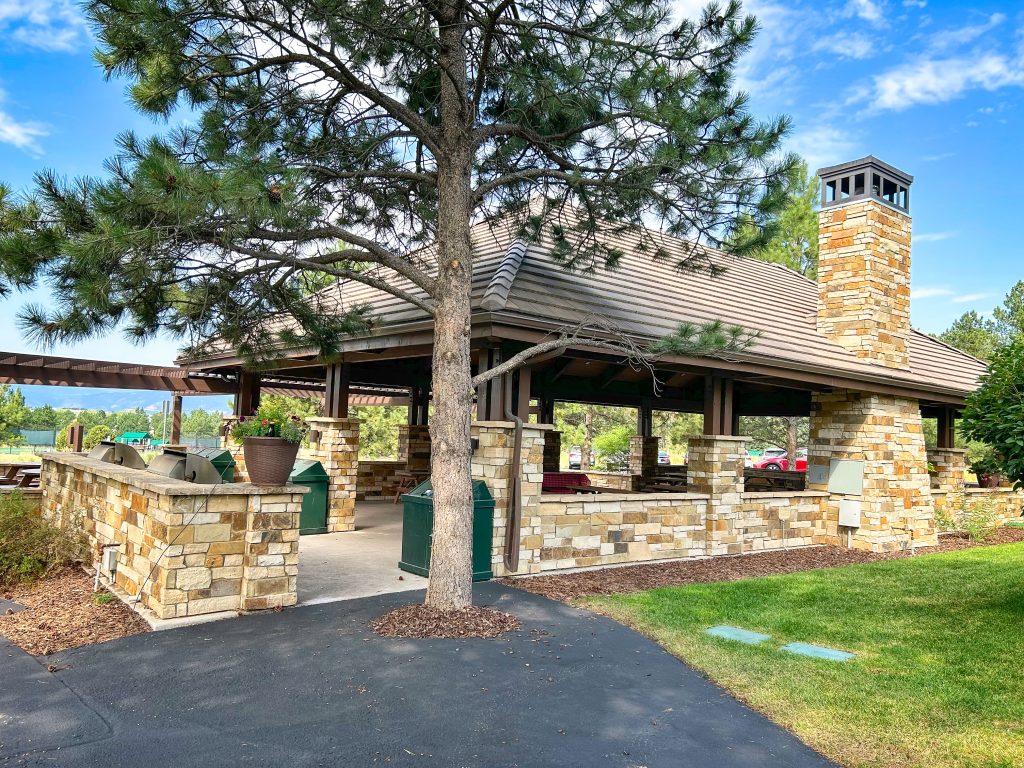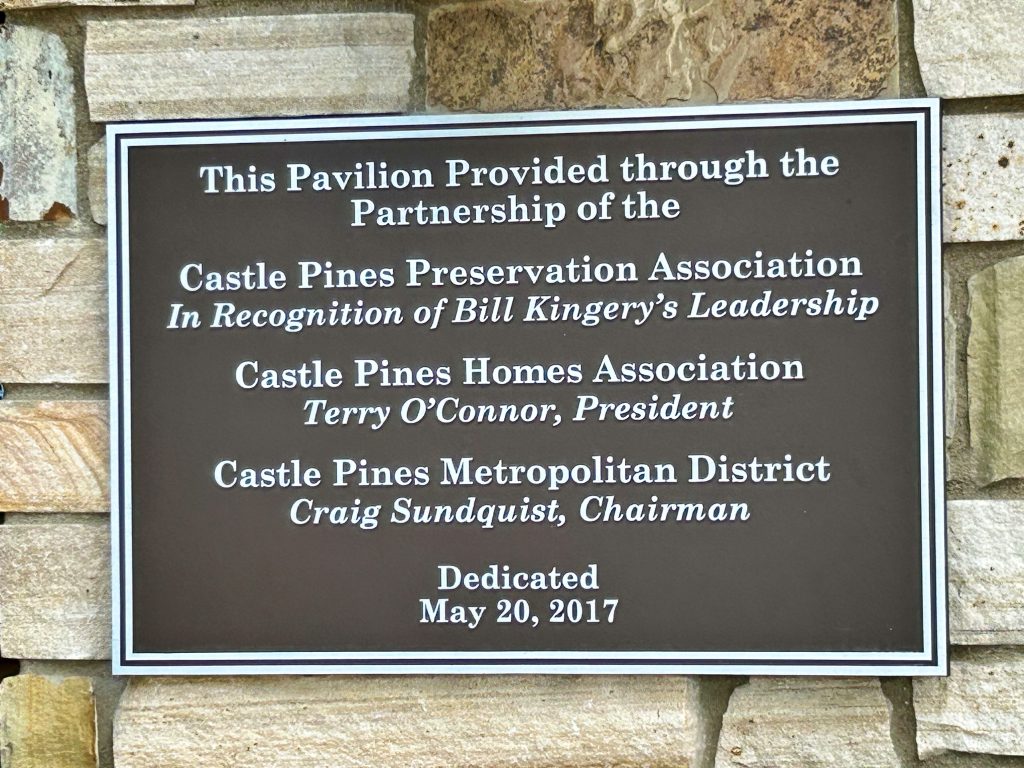The Pavilion in The Village showcases original settlers


The pavilion in The Village at Castle Pines was built in 2017 through contributions from the Castle Pines Homes Association, Castle Pines Metropolitan District and the Castle Pines Preservation Association in recognition of Bill Kingery in 2017.
When The Village at Castle Pines chose to build its Pavilion seven years ago, it was designed to serve as a multiple-use facility: a gathering place, a venue for larger celebrations and an additional space for parties at the main pool. It is considered by some to be the center of summer and fall social activities.
With a sizable fireplace, numerous picnic tables, tasteful half masonry walls and timbered roof, breezes passing through on a midsummer day make it a heavenly retreat.
This month, the Pavilion has become more personalized. Informational storyboards about some of Douglas County’s early migrants who sought to advance their lives here, will be mounted on the Pavilions’ main support pillars.
To set the scene, more than 165 years ago and but for the value of its forests and the utility of fields abutting East Plum Creek, any effort at large-scale farming and ranching would yield meager results. With few exceptions, acreage in The Village of yore was only for dreamers. Those who came were indeed a disparate lot.
Early on, Michigander John Manley Chase and his family dominated the area. They were beneficent in the use of their land and made it available to others, enriching the Village’s local flavor.
Consider firebrand abolitionist John Karcher, who influenced President Abraham Lincoln and ran a tavern in Sedalia. Another was Swiss immigrant shoemaker, Jacob Wolfensberger, and his Swedish wife, Martha. Then, at Civil War’s end, tired and disabled veteran James Loak claimed his much-deserved piece of free land with high hopes.
John Goldsby of Saguache joined the community in 1874 with his wife, Mary Logan, and five children. Elizabeth Howe, a strong and determined single woman, started a ranch from the ground up. Late to the party was Cyril Reynolds. Though he failed at ranching, he found work at the Dupont Dynamite Plant in Louviers, and later he became manager of the Douglas County Fair.
Next time you are in the neighborhood for tennis, a swim meet, pickleball or a picnic, check out the pioneer stories and gain a new appreciation for grit and determination of those who came before us.

By Joe Gschwendtner